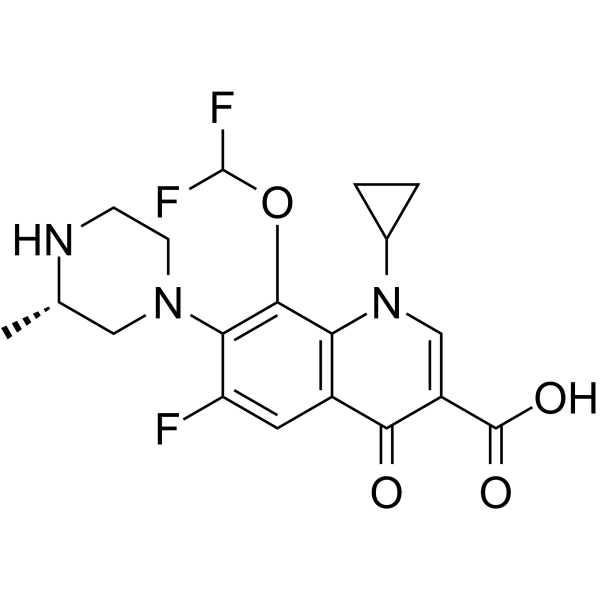| Description |
Cadrofloxacin (Caderofloxacin; CS-940), a orally active fluoroquinolone, is effective against aerobic/anaerobic Gram-positive and Gram-negative bacteria. Cadrofloxacin can be used for the research of infectious diseases[1][2][3].
|
| Related Catalog |
|
| In Vitro |
Cadrofloxacin against M.tuberculosis with a MIC50 of 0.25 μg/mL[1]. Cadrofloxacin against Acinetobacter spp. and Stenotrophomonas (Xanthomonas) maltophilia with MIC90s of 0.03 and 2 μg/ml, respectively[2]. Cadrofloxacin against Haemophilus influenzae, Moraxella catarrhalis, and Neisseria spp. with MIC90s less than or equal to 0.06 μg/mL[2]. Cadrofloxacin against members of the family Enterobacteriaceae with MIC90s of 0.015 to 16 μg/mL (median MIC90, 0.06 μg/mL)[2].
|
| In Vivo |
Cadrofloxacin (9 mg/kg; i.g.; once or twice daily for 14 consecutive days) increases the activity of hepatic CYP2E1 in rats[2]. Animal Model: Male Sprague-Dawley rats weighing 180-220 g[2] Dosage: 9 mg/kg Administration: I.g. once or twice daily for 14 consecutive days Result: Enhanced the expression of hepatic CYP2E1 mRNA, inducing a 1.6-fold increase compared with that of control rats. The level of CYP2E1 protein in the hepatic microsomes was significantly higher than control group, 190% of that in control rats.
|
| References |
[1]. Bryskier A, et al. Fluoroquinolones and tuberculosis. Expert Opin Investig Drugs. 2002 Feb;11(2):233-58. [2]. Biedenbach DJ, et al. Antimicrobial activity of CS-940, a new trifluorinated quinolone. Antimicrob Agents Chemother. 1995 Oct;39(10):2325-30. [3]. Bryskier A, et al. Fluoroquinolones and tuberculosis. Expert Opin Investig Drugs. 2002 Feb;11(2):233-58.
|
